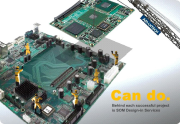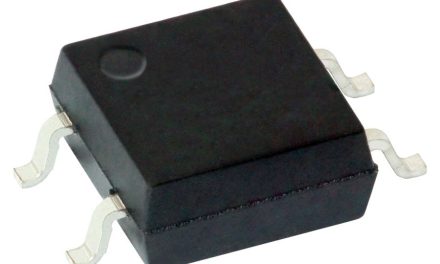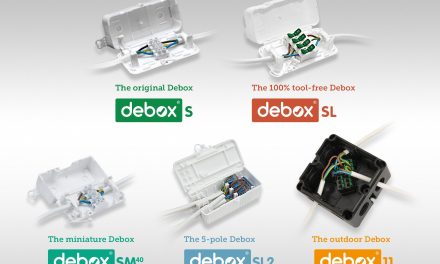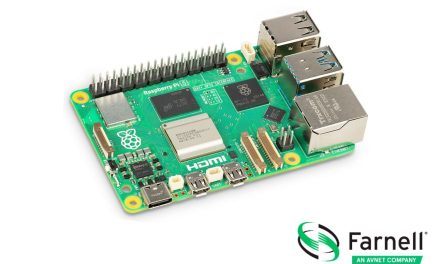By Claus Giebert, Business Development Manager, Advantech
It is well documented that faster application development and shorter time-to-market can provide significant business value, but only if the appropriate quality can be delivered. This is where the latest technologies, not least computer-on-module (COM) products, can provide a vital boost for applications. COM solutions comprise processer, chipset, cooler, heatsink, memory, ECC memory, secure boot and peripherals – all designed into a single component module that makes life considerably easier – and faster – for developers in sectors such as industrial, medical, retail and logistics.
There are many reasons to shorten application development cycles, predominantly the potential to achieve a faster return. In addition, getting to market ahead of key competitors provides a major business advantage, while early feedback delivers another market edge for developers.
Accomplishing these competitive gains will be even more vital in the coming 12 months, when principal industrial trends areas such as artificial intelligence (AI) and the IoT will continue to grow, driven by ever-greater demand for higher performance computing.
Wide application suitability
Applications are wide and varied, but include edge computing platforms with high data throughput capability to match the increasing deployment of 5G communications. In fact, almost any application demanding autonomy, significant bandwidth and ultra-low latency will benefit from COM technology.
Machine vision is another area of interest, where AI is increasingly required for some form of quality control or verification, such as in automatic number plate recognition or automated diagnosis in the medical sector. Applications for those looking to develop deep learning frameworks are also growing in prominence.
Another factor at play here is the COVID-19 pandemic and the deep economic recession it leaves behind. To survive, industry must innovate. Leading COM technology can be used to accelerate the innovation process, particularly when supported by comprehensive design services. And while the level and type of support provided depends upon each individual application, a specialist in
COM will be able to offer a number of core competencies, not least mainstream platforms for the latest-generation 45W CPUs, and flow cooling solutions to keep thermal issues in check.
Further competencies include remote solutions for device management. Simple-to-use interface technology makes it easy to on-board, visualise, operate and manage industrial IoT devices. Users can monitor the health status of devices, take real-time actions to power on/off, troubleshoot problems, and send software and firmware updates over-the-air (OTA) on-site and remotely, at scale.
Of course, more COM users are increasingly seeking solutions with higher computing performance to deal with multi-task processing and massive data transmissions for IoT applications. Here, the latest server modules with faster I/O, higher RAM and COM technology create a new page to break through the ceiling of computing power.
Mission-critical applications are another core competency. For military radar or pacemakers, for example, only the highest reliability electronics can deliver uninterrupted service. A trusted COM specialist should be certified to IPC-A-601G Class 3, ensuring its suitability to meet mission-critical needs.
Inherent flexibility
Notably, since COM architecture provides various standard specifications in different form factors and pin-out types, it not only gives customers the flexibility to choose a suitable solution for their application, but saves crucial development time. Partners having to meet a range of product requirements in a manner that minimises development effort and time-to-market should consider adopting a COM strategy. In short, the COM modular design approach relieves developers from the many complexities of CPU system or sub-system design.
A good place to start in seeking support for high-performance computing requirements is with Intel® Mobile Core™ platforms. Advantech is currently witnessing high demand for the Intel® Whiskey Lake-U and Intel® Coffee Lake-H processors, which are used as platforms for the company’s COM Express series of Compact and Basic modules. In 2020, the SOM-6882 has been selling extremely well in medical applications, helping to protect many people from COVID-19.
Of course, this high computing power does not come for free, meaning there is an inevitable trade-off that is typically linked to heat and noise. As a result, an effective solution for the silent cooling of high power is required.
 For those seeking such a device, consider products that provide access to the full power (100%) of the CPU without throttling, such as the Advantech QFCS. Comprising an advanced cooling heatsink, using a solution of this nature makes it possible to run with 45W on the CPU and with environmental air temperature as high
For those seeking such a device, consider products that provide access to the full power (100%) of the CPU without throttling, such as the Advantech QFCS. Comprising an advanced cooling heatsink, using a solution of this nature makes it possible to run with 45W on the CPU and with environmental air temperature as high
as 60°C. In terms of noise, a well-designed flow cooling system should specify a peak of no more than 45dB at 4300 rpm, which is the maximum speed of typical CPU fans.
Lower power platforms
Of course, high performance is not everything. For certain applications, power dissipation, cooling and a small profile can be significantly more important. Having access to a range of dedicated lower power platforms is therefore vital, particularly ones that are optimised for applications where every Watt counts.
Another important area is SMARC 2.0 specification computers. To accelerate work on SMARC 2.0 applications, using a ready-made, plug and play development starter kit can save a significant amount of time and effort. Such kits should include a display, carrier board, heatsinks, power supply and all required cables. A kit like the Advantech SOM-DK2569 also includes a demo licence of Wise-Paas/DeviceOn IoT software, which can monitor and manage hundreds or thousands of devices in the factory, and perform OTA (over-the-air) software and BIOS updates at the same time, making it ideal for developers of robotic arms and AGVs (automated guided vehicles).
Sometimes, entry-level and medium performance solutions will not suffice, which means moving up to server-class COM solutions with many cores and large memory capacity. Such COMs provide developers with high data processing capability, high network bandwidth, scalability, easy deployment, low latency and potential use on remote management platforms.
Where mission-critical performance is required in harsh operating environments, such as applications for the test equipment, transportation and defence sectors, a rugged and robust COM design is needed alongside features such as memory down, SO-DIMM, on-board mass storage and conformal coating.
Supporting the innovation
As well as product innovation, excellence in COM design and manufacturing support is paramount. A good way to expedite the application and time-to-market is to seek out a technology partner that can fulfil the complete carrier board design service in line with customer specifications, and help in transitioning to the quality assurance and testing phase.
With regard to testing, appointing a supplier with extensive in-house facilities is highly advantageous. For example, having access to a HALT (highly accelerated life test) chamber ensures that products will withstand application requirements, not just for the first six months or two years, but for their entire product lifecycle, making it a major asset in shortening time-to-market.
Ultimately, choosing to work with a specialist that can offer a dedicated set-up of experts, product solutions and manufacturing/testing resources, will help developers get to market faster (without compromising quality), concluding with problem-free mass production. In an era when cost differentials are minimal, other means of achieving competitive gain must be found. Using COM solutions, in tandem with best-practice design and production support, is therefore proving an increasingly popular way to get ahead.




